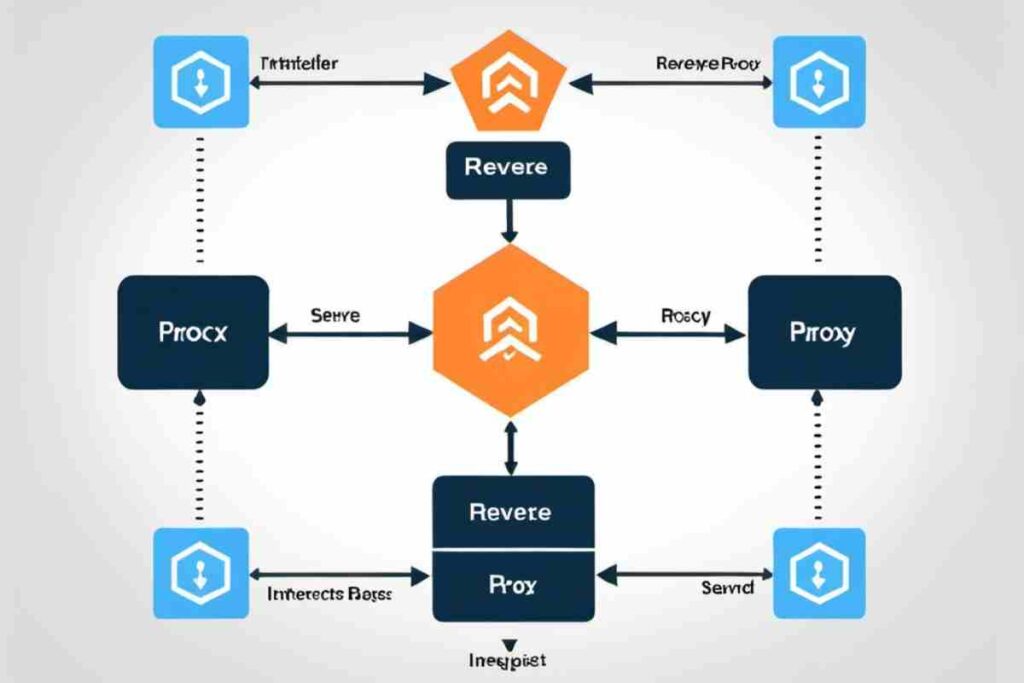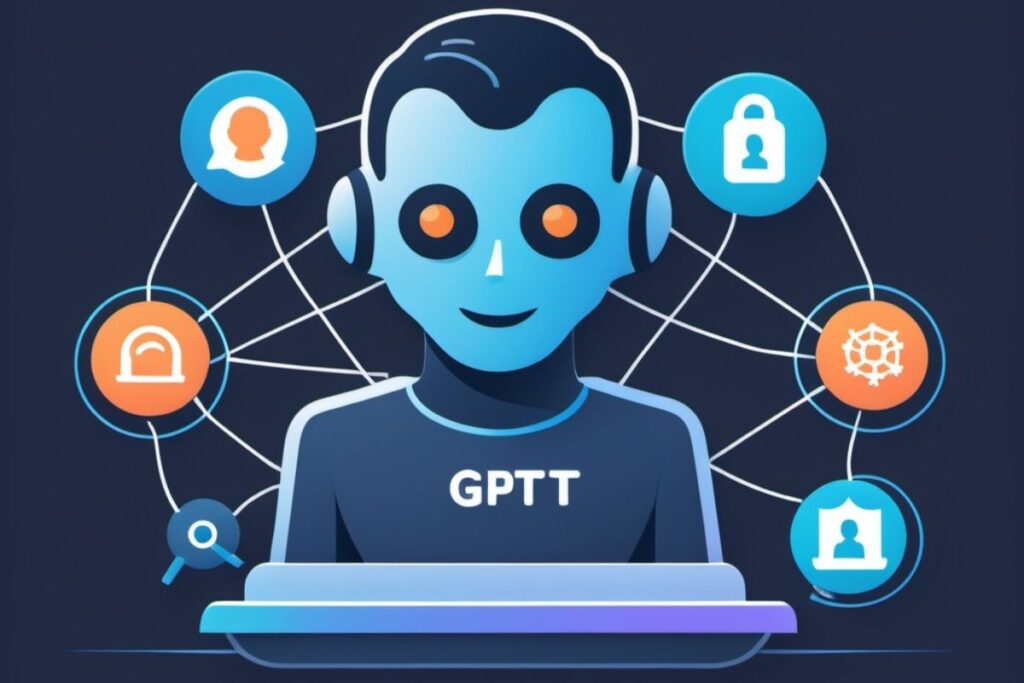Deploying ChatGPT, OpenAI’s powerful conversational AI, has become popular across various applications for its ability to generate human-like responses. However, to ensure secure, scalable, and efficient deployment, setting up a Chat GPT reverse proxy is essential.
This guide will take you through a step-by-step process of configuring a reverse proxy for ChatGPT, covering its importance, setup, security best practices, performance optimization, and maintenance.
What is a chat gpt reverse proxy?

A chat gpt reverse proxy acts as an intermediary server between clients and backend servers. When clients make requests, the reverse proxy intercepts these requests, forwards them to the appropriate server, and then sends the server’s response back to the client.
This process is transparent, and it’s invaluable for enhancing server security, load distribution, and caching.
For AI models like ChatGPT, a reverse proxy offers essential benefits:
- Enhanced Security: Encrypts traffic, protecting data in transit and shielding backend servers.
- Improved Performance: Through caching and load balancing, a reverse proxy can manage high traffic without overloading backend servers.
- Scalability and Flexibility: By distributing traffic, reverse proxies help in managing growing workloads and maintaining seamless service.
Setting Up a Chat GPT Reverse Proxy
Deploying a chat gpt reverse proxy requires choosing the right software, configuring it correctly, and implementing best practices for security and performance.
Below are the key steps involved in setting up a ChatGPT reverse proxy using popular software such as Nginx, Apache HTTP Server, or HAProxy.
Step 1: Choosing Reverse Proxy Software
Selecting the right software is crucial. Each option has unique strengths:
- Nginx: Known for high performance and low resource usage, suitable for handling numerous concurrent connections.
- Apache HTTP Server: A versatile choice, particularly for users familiar with its configuration options.
- HAProxy: Excellent for advanced load balancing and high availability, often used for larger-scale deployments.
Choose the software that best fits your requirements. For example, if you need high-speed performance with minimal overhead, Nginx is an ideal choice.
How to Access ChatGPT Through a Proxy
To use a ChatGPT proxy online, follow these steps:
- Set up a reverse proxy server with tools like Nginx or Cloudflare.
- Configure it to route API requests through a secure proxy.
- Use available ChatGPT proxy free options if you need quick access without custom setup.
How to Get ChatGPT API for Free
Users looking for a free OpenAI API key GitHub repository or an OpenAI API key free generator should proceed with caution. While some platforms provide temporary access, OpenAI’s official API typically requires a paid subscription for long-term use.
What Does a Reverse Proxy Do?
A reverse proxy sits between the client and the server, forwarding requests while enhancing security and performance. For OpenAI services, it helps balance loads, protect API keys, and ensure smoother interactions with ChatGPT.
OpenAI Reverse Proxy Free: How It Works
Some developers create OpenAI reverse proxy free solutions to facilitate API access without direct OpenAI subscription costs. These services reroute requests through third-party servers, but users should verify security before using them.
Setting Up a ChatGPT Reverse Proxy
To create a ChatGPT reverse proxy example, you can:
- Use ChatGPT reverse proxy GitHub repositories for pre-built configurations.
- Deploy a self-hosted solution on a VPS with proper security settings.
- Integrate an OpenAI API proxy for better request handling and efficiency.
Free ChatGPT Proxy: What Are Your Options?
Several ChatGPT proxy free solutions exist, but they vary in reliability. Free proxies often have limits on requests, speed, and security, so it’s crucial to assess their stability before use.
Janitor AI and OpenAI API Proxy
Janitor AI is a chatbot tool that sometimes integrates OpenAI API proxy setups to optimize AI interactions. It helps manage API requests efficiently, ensuring seamless ChatGPT usage
Security Considerations
Securing ChatGPT’s deployment is paramount, especially if handling sensitive data. Here are essential security practices for your ChatGPT reverse proxy setup:
- SSL/TLS Encryption: As discussed, use SSL/TLS certificates to encrypt traffic, ensuring data protection.
- Authentication and Authorization: Implement access controls to limit usage to authorized users only. For example, you could use JSON Web Tokens (JWTs) for API access control.
- Firewall and Rate Limiting: Use firewalls and configure rate limits to protect against DDoS attacks. Consider tools like fail2ban to detect and block malicious IP addresses.
Performance Optimization for ChatGPT Reverse Proxy

Benefits of Using a ChatGPT Reverse Proxy
- Improved Performance – A reverse proxy reduces latency and optimizes API calls for faster responses.
- Enhanced Security – It helps protect API keys and sensitive data from unauthorized access.
- Access Control – Allows better management of who can access the API and how requests are handled.
- Bypass Restrictions – Some ChatGPT proxy free solutions enable access where OpenAI services may be limited.
How to Access ChatGPT Through a Proxy
To use a ChatGPT proxy online, follow these steps:
Maintenance and Monitoring for Optimal Functionality

Regular maintenance and monitoring are essential for a secure and efficient reverse proxy setup. Here are some best practices:
- Routine Updates: Keep the reverse proxy software updated to patch vulnerabilities and improve functionality.
- Real-Time Monitoring: Use monitoring tools (e.g., Grafana, Prometheus) to monitor server health, request latency, and error rates.
- Backup and Recovery: Implement robust backup protocols for configurations and data to recover quickly from data loss or server crashes.
Case Study: Reverse Proxy Benefits for ChatGPT
Let’s consider a real-world example where an e-commerce company deployed ChatGPT for customer support. By implementing a reverse proxy with caching and load balancing, they were able to:
- Improve Response Time: Caching frequently accessed responses reduced latency by up to 40%.
- Secure Customer Data: SSL/TLS encryption protected sensitive customer interactions.
- Scale Effortlessly: Load balancing ensured consistent performance, even during high-traffic periods.
This example illustrates how a well-configured reverse proxy can enhance ChatGPT deployment’s efficiency, security, and scalability.
Conclusion
A ChatGPT reverse proxy enhances performance, security, and scalability, ensuring fast and reliable AI interactions. Whether you’re looking for an OpenAI chat gpt reverse proxy free solution or a ChatGPT proxy online, these proxies help optimize API requests, reduce latency, and secure data.
Many users explore free OpenAI API key GitHub repositories or an OpenAI API key free generator to access AI services affordably.
Additionally, tools like Janitor AI and OpenAI API proxy setups further streamline AI usage. Setting up a ChatGPT reverse proxy free or referring to chat gpt reverse proxy GitHub examples ensures smooth integration, with numerous ChatGPT proxy free options available for experimentation.
FAQs
What is a ChatGPT reverse proxy?
A ChatGPT reverse proxy acts as an intermediary between users and OpenAI’s servers, optimizing performance, security, and access control.
How to access ChatGPT through a proxy?
You can configure a server or use a free ChatGPT proxy service to bypass restrictions and improve connection stability.
How to get ChatGPT API for free?
Some GitHub repositories offer free OpenAI API keys, but always verify their legitimacy before use.
What does a reverse proxy do?
A reverse proxy manages requests between users and servers, improving security, load balancing, and latency.
What is OpenAI reverse proxy free?
An OpenAI reverse proxy free solution provides alternative access to OpenAI models, often reducing costs or bypassing restrictions.
How to set up a ChatGPT reverse proxy?
You can configure a self-hosted server or use pre-built GitHub repositories for setting up a ChatGPT reverse proxy.
Is there a free ChatGPT proxy available?
Yes, some free ChatGPT proxies exist, but their reliability varies; always check security and response speed.
What is Janitor AI, and how does it relate to proxies?
Janitor AI is a chatbot platform that sometimes integrates OpenAI API proxies for optimized access and performance.



